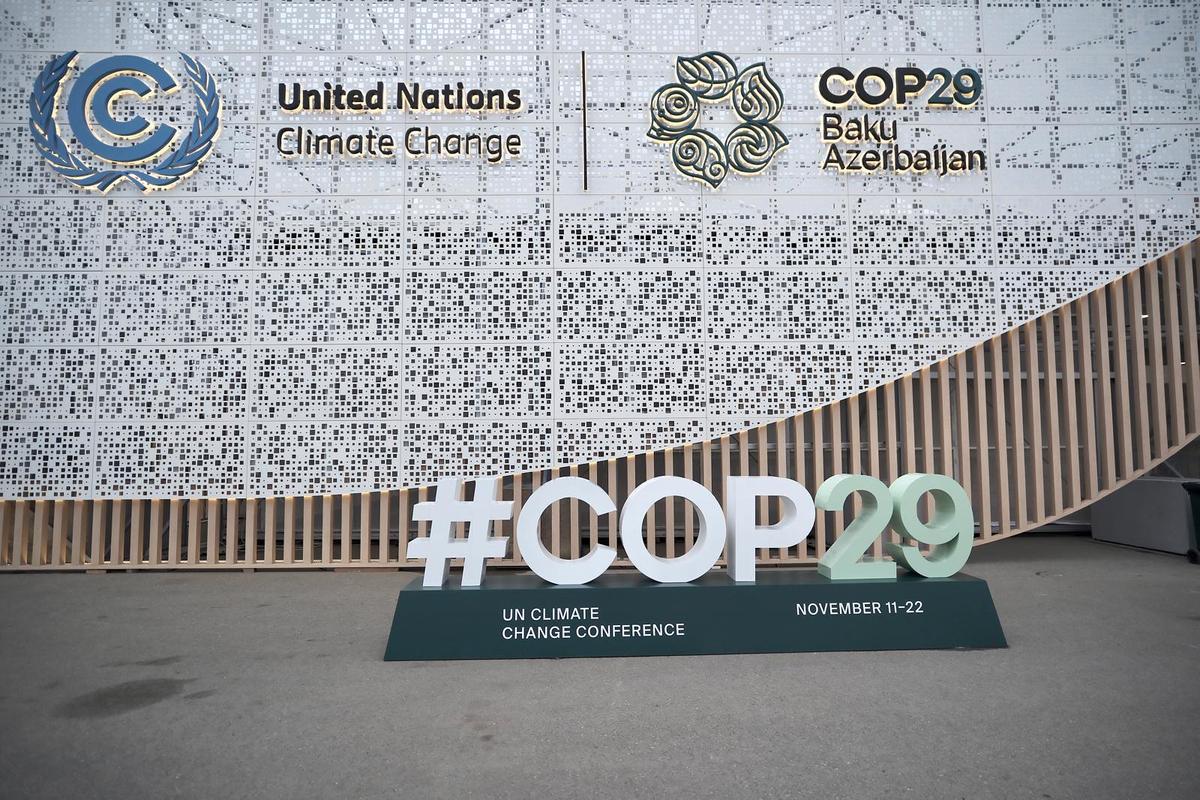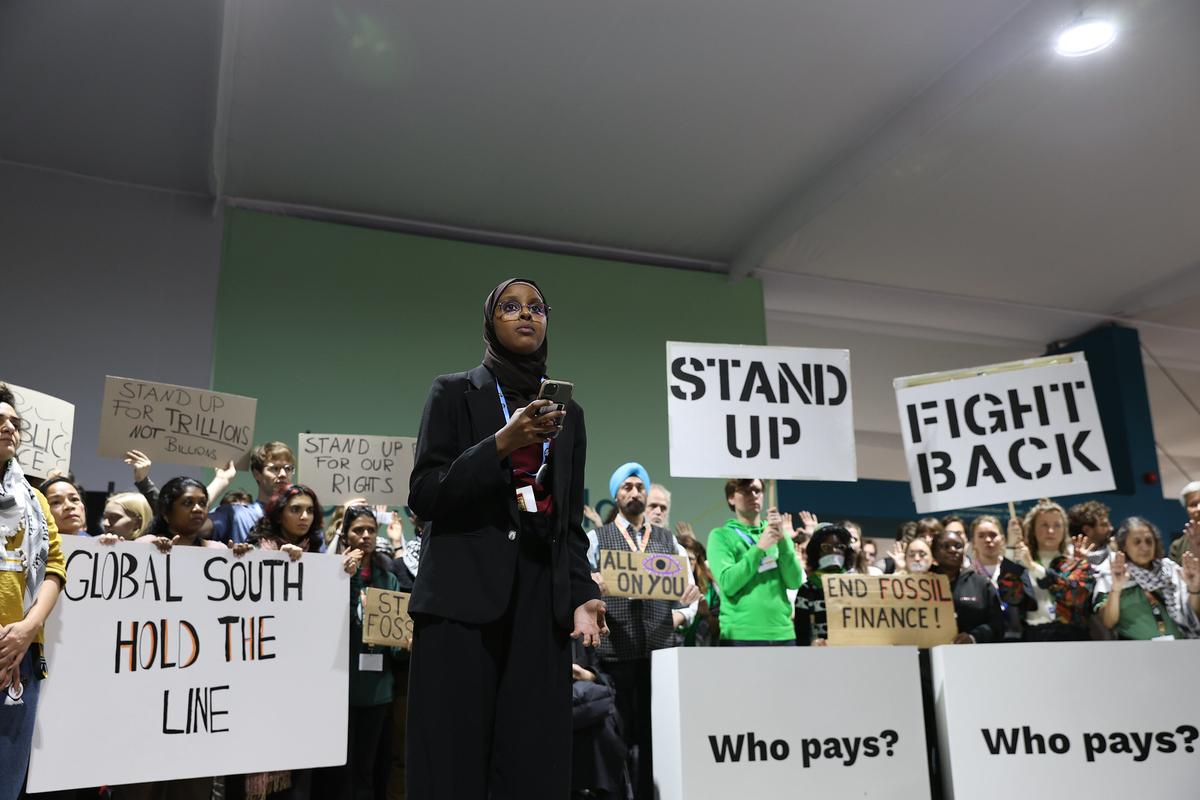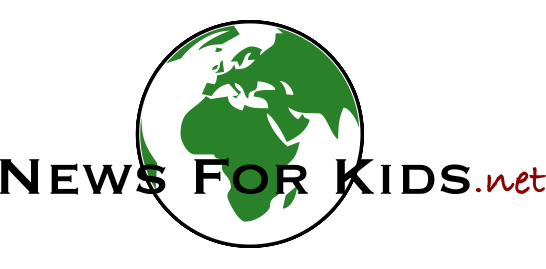Baku, Azerbaijan —(Map)
Early Sunday morning, nearly 200 countries from around the world reached an agreement to help poorer countries deal with the climate crisis. The agreement came at COP29*, a United Nations climate meeting in Baku, Azerbaijan. Many people think the deal doesn’t do enough to help poorer countries.
Climate Crisis
Since people first began burning coal to run factories, the world’s temperature has gone up by about 1.2 degrees Celsius (C)**. This increase has led to serious long-term changes in weather patterns that affect all life on Earth.
The world is getting hotter, mainly because humans are burning “fossil fuels” like coal, oil, and natural gas to make energy. These fuels give off pollution called “greenhouse gases” or “carbon emissions”, which make the climate emergency worse.
The effects of climate change can already be seen: melting ice in Antarctica and the Arctic, higher temperatures, heat waves, droughts, wildfires, record rains, and more strong hurricanes.
Scientists say the world must take strong action before 2030, and limit global warming to 1.5ºC to avoid the worst effects of the climate crisis.

(Source: IRENA, via Flickr.com.)
Experts agree that to limit global warming, the world needs to end the use of fossil fuels like coal and oil. But ending fossil fuels wasn’t part of the COP29 deal. That’s largely because Saudi Arabia fought hard to keep limits on fossil fuels out of the agreement.
The host country, Azerbaijan, is also a huge producer of oil and natural gas. And COP29 president, Mukhtar Babayev, worked for Azerbaijan’s oil company for 26 years. Also, over 1,700 people connected with coal, oil, and gas companies came to COP29 to argue for fossil fuels.
😕
This image has not been loaded because of your cookie choices. To view the content, you can accept 'Non-necessary' cookies.
Ending fossil fuels wasn’t part of the COP29 deal. Saudi Arabia fought hard to keep limits on fossil fuels out of the agreement. The host country, Azerbaijan is a huge producer of oil and natural gas. And COP29 president, Mukhtar Babayev (above), worked for Azerbaijan’s oil company for 26 years.
But there are also many other important problems that the COP meetings must consider. The main focus of this meeting was on money – who would pay for what.
For many years, poorer countries have been asking richer countries for help dealing with climate change. Richer countries are responsible for most of the pollution that has caused global warming, but poorer countries are often hit hardest by the effects of the climate crisis.
In 2009, rich countries promised to give $100 billion ($100,000,000,000) a year to poorer countries to help them deal with climate change. That promise wasn’t kept until 2022.

(Source: UNclimatechange, via Flickr.com.)
The climate crisis has become more and more serious. 2024 is expected to be the hottest year on record. Many poor countries continue to be hit hard by extreme weather.
At COP29, poorer countries were hoping for much more money from richer countries. This money is meant to help clean up after disasters and change these countries over to clean energy. A group of experts suggested that richer countries should pay $1.3 trillion ($1,300,000,000,000) every year. But it soon became clear that that wasn’t going to happen.
A group of 77 developing countries, known as the G77, asked instead for a promise of $500 billion ($500,000,000,000) a year. Still, the richer countries said they were unable to pay that much. Tensions were high. On Saturday, groups representing island nations and several poorer countries walked out of the meeting.
😕
This image has not been loaded because of your cookie choices. To view the content, you can accept 'Non-necessary' cookies.
Though the deal is a step forward, people representing poorer countries aren’t happy. They point out that $300 billion is far less than the money needed. Above, Chandni Raina, who represented India, described the offer as “poor”, saying,”I am sorry to say that we cannot accept it.”
Finally, early Sunday morning, roughly 30 hours after the meeting was supposed to end, an agreement was reached. The deal promises $300 billion ($300,000,000,000) a year by 2035.
Though the deal is a step forward, people representing poorer countries aren’t happy. They point out that $300 billion is far less than the money needed. They’re also worried that the money will come as loans, which could leave their countries owing a lot of money. And rich countries aren’t forced by law to follow the agreement.
Many people see the deal as a sign that rich countries are still unwilling to take responsibility for their part in creating the climate crisis.
Did You Know…?
One thing that made the COP29 discussions difficult was deciding which countries were “developed” (rich) and which were “developing” (poor). The UN decided which countries were developed and which were developing back in 1992, and a lot has changed since then. Many Western countries think countries like China and Saudi Arabia should now be treated like developed countries.
* COP stands for “Conference of the Parties”, which basically means “Meeting of the countries that signed the agreement”. In this case, the agreement is the 1992 United Nations Framework Convention on Climate Change. This was the 29th meeting since the agreement was first signed.
** Climate change temperatures are measured against the time when humans started burning coal for power. This article talks about climate change using Celsius (C). Talking about climate change in Celsius is more common and it makes the changes easier to see and remember.
If you want to think about the temperature changes in Fahrenheit( F), you can use these figures: 1.2ºC = 2.16ºF, 1.5°C = 2.7°F
😕
This map has not been loaded because of your cookie choices. To view the content, you can accept 'Non-necessary' cookies.
